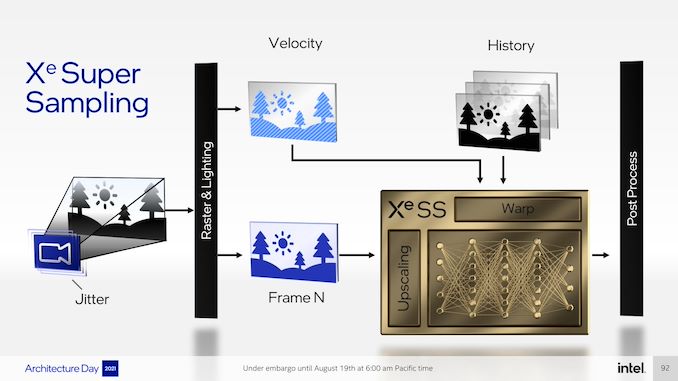Originally posted by vegabook
View Post
Announcement
Collapse
No announcement yet.
Intel Arc Graphics Running On Fully Open-Source Linux Driver
Collapse
X
-
Intel on Linux is already ready since Mesa 22.0, according to the DXVK wiki:Originally posted by dimko View PostASSSUMING Intel will have Vulkan drivers in good enough state, I shall LAUGH MY ASS OFF if it turns out that Intel will work much better with dx9 and dx11 with Steam on Linux than it will do so on Windows. We have been doing VK to DX transition for half decade, and DX12 to DX9 is just new AND its just released by Microsoft. Which means it will be shitshow.(and as far as I know - it is)
The following Linux drivers are supported:AMD (RADV) 22.0 22.0 Nvidia 510.47.03 515.49.06 (beta) Intel (ANV) 22.0 22.0
Comment
-
Meh. I'll probably pick up a couple of them. They are supposed to price them based on their DX9-DX11 performance. I need a bunch of GPUs.Originally posted by vegabook View PostNice on the open source drivers but it's not enough. These discrete GPUs are DoA. Late. Slow. incomplete. Rumours flying that they'll meet their maker Xeon Phi-style.
Intel would be well advised to look to the future, take this IP and stick it on-package with a huge memory bus, M1-style, and forget about dGPUs. Remember math coprocessors? No you probably don't. Exactly.
- Likes 2
Comment
-
I think it's pure speculation, rather than rumors. High-profile products that Intel previously cancelled went through at least 2 generations before they got canned. That's what happened with their phone SoCs and Xeon Phi, at least.Originally posted by vegabook View PostNice on the open source drivers but it's not enough. These discrete GPUs are DoA. Late. Slow. incomplete. Rumours flying that they'll meet their maker Xeon Phi-style.
The math coprocessor analogy is weird, because Intel already moved their GPUs on die more than 10 years ago.Originally posted by vegabook View PostIntel would be well advised to look to the future, take this IP and stick it on-package with a huge memory bus, M1-style, and forget about dGPUs. Remember math coprocessors? No you probably don't. Exactly.
As for in-package memory, it's not necessary. The M2's memory bandwidth is roughly the same as AMD's 6850U, and the latter uses the traditional approach of external LPDDR5. The main benefit for Apple is probably just size reduction. Other potential benefits might include small improvements in latency, energy-efficiency and maybe cost reduction, but nothing game-changing.
To see real wins, you have to go to the M1 Pro or M1 Max, where they increased the memory data width to 256-bits and 512-bits, respectively. That's not inexpensive, because those extra DRAM dies add a non-trivial cost. It's probably only a little cheaper than going for a 4-channel or 8-channel external DRAM setup (but way more compact).
- Likes 3
Comment
-
Sounds like someone's never heard of XeSS.Originally posted by pinguinpc View PostFor send jensen and su to hell and dont care upscalers, raytracing and other crap from them
and dont care upscalers, raytracing and other crap from them
- Likes 2
Comment
-
It's basically just PCIe 5.0, except a different protocol. At x16 lanes, you'd still have less bandwidth than a mainstream desktop with 2-channel DDR5.Originally posted by mppix View PostThat is probably exactly what they are doing: the "huge" memory bus is called CXL.
CXL 3.0 upgrades it to PCIe 6.0-equivalent speeds, but that standard was just ratified and nobody has yet announced products with it.
In the long term, what we might see is consumer CPUs moving towards a limited amount of in-package memory, with CXL offered on higher-end models for capacity expansion. That won't happen until memory tiering matures, however. So, not for a few more years, at least.
- Likes 2
Comment
-
i think AMD does not have the patent licenses ... and also i believe if you believe in the success of AV1 you plain and simple no longer need any 264 or 265 or whatever.Originally posted by tildearrow View Post4:4:4 H.264 let's go!
AMD never catches up
Every new VCN revision adds nothing
so why not just use AV1 like any other SANE person ?Phantom circuit Sequence Reducer Dyslexia
- Likes 3
Comment
-
people believe itanium was a failure but for intel it was a huge success because before Itanium intel had one more company as competition and after itanium this other company did quit the CPU market.Originally posted by onlyLinuxLuvUBack View PostGPU will Meet maker by
a) itanium style
b) xeon phi style
c) optane style ?
itanium did completely sapotage this other company and in the end everyone was on intel x86 ... huge success for intel.
this other CPU company was this one: "The Itanium architecture originated at Hewlett-Packard (HP), and was later jointly developed by HP and Intel."
before itanium HP was in the cpu space competition to intel... after the huge success of subversive sapotage action of itanium HP did quit the cpu space.Phantom circuit Sequence Reducer Dyslexia
- Likes 1
Comment
-
Eh, this is 1st gen thats barely even out yet. Arc is not a side experiment like Optane or Xeon Phi, and I can't see the new CEO dumping it so quickly when he knows how long this stuff takes to spin up.Originally posted by vegabook View PostNice on the open source drivers but it's not enough. These discrete GPUs are DoA. Late. Slow. incomplete. Rumours flying that they'll meet their maker Xeon Phi-style.
Thats their plan in the HPC space, with Falcon Shores. And they sort of did it before with Broadwell.Intel would be well advised to look to the future, take this IP and stick it on-package with a huge memory bus, M1-style, and forget about dGPUs. Remember math coprocessors? No you probably don't. Exactly.
A M1-esque "APU" has to be in the pipeline, even if its not announced yet.
- Likes 2
Comment


Comment